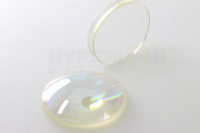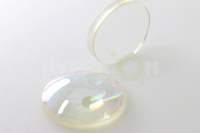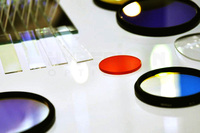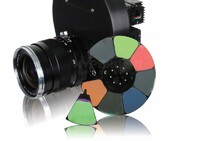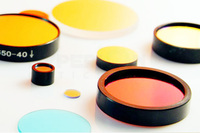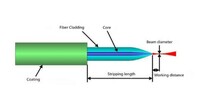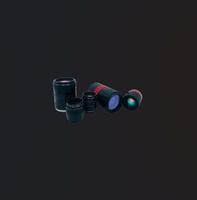Anamorphic Lenses
Product Quick Detail
- Minimum Order
- 1
- Packaging
- N/A
- Delivery
- N/A
Specifications
Hyperion Optics specializes in custom anamorphic optics design and production. We are experienced in creating custom solutions for unique applications such as projection and anamorphic photography.
Generally speaking, these lenses are special systems that effectively change the aspect ratios when projecting the image onto the camera sensor.
Compared to a more common type spherical lenses, which project images onto the sensor without causing an aspect ratio change, 2.35 1 anamorphic lens compress along the longer dimension and require
subsequent stretching in post-production or at the projector for the output image to be properly displayed.
anamorphic lenses for sale
With our high quality achromatic cylindrical lenses production capability, we are able to meet the challenging and demanding anamorphic design performance, please refer to our cylindrical lens
fabrication capability. Note that in some cases, custom achromatic cylindrical lenses are extremely thick in CT, and oftentimes material availability would be a manufacturing obstacle. Hyperion’s
production team is able to cement singlet parts on a real-time alignment device to avoid thickness unavailability of certain materials.
Here is a great sample of how anamorphic projection lenses can contribute to enhancing image quality:
anamorphic projection lenses
We begin with a cinemascope screen. Here we’re displaying a 2.35 or 2.40 film, notice the top and bottom black bars.
The first step is to electronically stretch the image vertically. This process is either called ‘vertical stretch’ or ‘zoom’ or ‘anamorphic mode’. The vertical stretch feature can be found in many
projectors and Blu-Ray players. We have taken the active illuminated pixels in the black bars and scaled them back into the image. This process increases the overall on-screen luminance or
brightness. Once vertically stretched, everything on screen looks tall and skinny - compare the image below with the image above.
cinemascope lens screen
The first step is to electronically stretch the image vertically. This is either called ‘vertical stretch’ or ‘zoom’ or ‘anamorphic mode’. This feature can be found many projectors and Blu Ray
players. We have taken the active illuminated pixels in the black bars and scaled them back into the image. This process increases the overall on screen luminance or brightness. Once vertically
stretched, everything on screen looks tall and skinny- compare the image below with the image above.
anamorphic mode
Finally, we take the optical expansion of the vertically stretched image to restore the geometry and to fill the entire cinemascope screen with the active image. The result below is an image that
is 78% larger than the original. Now compare the top and bottom images.
Highlights of Hyperion Optics’ anamorphic design
Expected aspect ratio control
Sharp image quality, tested and verified MTF according to system requirements
Excellent achromatic feature
Design fit for 2.35, 2.39 and 2.4 aspect ratio
Theatrical cinema projection design available
Hyperion Optics’ anamorphic design
ADVANTAGES OF ANAMORPHIC LENSES:
Anamorphic lenses takes full advantage of the performance of the projector to show a broader view and to bring about a more comfortable viewing effect.
Why use anamorphic lenses:
Anamorphic lenses can deform the projection image through the lens to meet the need of a wider screen. It allows for a wide range of scenes to be compressed into the standard frame area.
How the anamorphic lens works:
Add a set of oval compression lenses to the lens, and the film will be vertically stretched to fit the size of 35 mm. At the time of the screening, all we need to do is to use the opposite oval to
magnify the lens, and we could recover the original film of 2.35:1.
The difference between spherical and dslr anamorphic lenses:
1. The curvature radius of the spherical lens is the same everywhere, but the curvature radius of the anamorphic lens is different from the center to the edge of the lens; and the curvature radius
of the edge is usually longer.
2. A zoom lens of multi-slice spherical lens combination can easily produce barrel distortion at the wide angle end, and pillow distortion can be easily generated at long focus end.
If you want to know more details of optical assembly manufacturing, please visit our website.
- Country: China (Mainland)
- Business Type:
- Market:
- Founded Year:2016
- Address:
- Contact:Boxin Li
Other products from Hyperion Optics
Relate products of Anamorphic Lenses
Lensed Fiber
In some optical application, lens, reflector and other micro-optics components are normally needed to be assembled on optical fibers\' end face. We can also process the fiber tip into a kind of lens. At present, MEISU has the first-class optical fiber lens processing ...
SWIR LENSES, INFRARED LENS, IR CAMERA LENS & ACCESSORIES
GHOPTO provides various of swir imaging lenses & accessories for short wave IR camera that can satisfy your requirements in different aspects, including Fixed focal length SWIR infrared camera lens and Zoom SWIR infrared camera lens. GHOPTO Fixed focal length SWIR lens and SWIR ...


